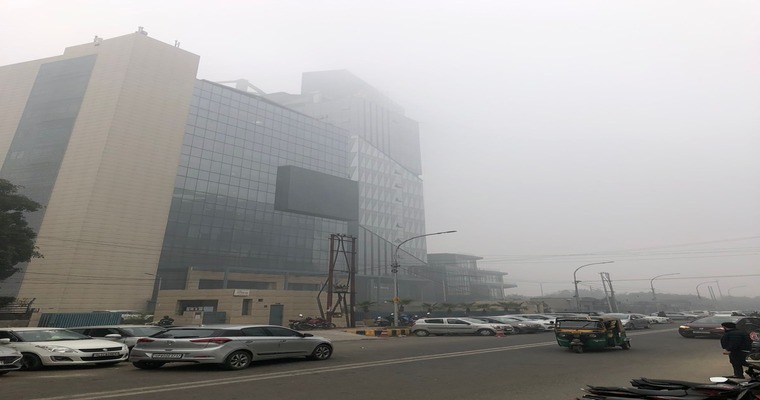
A thick blanket of fog has engulfed the northern plains of India, cloaking parts of Punjab, Haryana, Delhi, northwest Rajasthan, and Uttar Pradesh in an eerie veil. This dense fog, described as "dancing" by some, has caused major disruptions to travel, impacting flights, trains, and road traffic. The culprit behind this weather phenomenon is a passing western disturbance, which has increased moisture levels across the region. Light winds and low temperatures, coupled with high humidity, have created the perfect conditions for this intense fog formation.
While the fog is expected to lift by noon, visibility remains severely reduced, making travel hazardous. Flights have been delayed or cancelled, and trains are running at a snail's pace. Commuters are facing long delays and cancellations, forcing many to adopt alternative modes of transportation or work from home.
Not the First, But the Worst
While the occurrence of fog is common during the winter months in northern India, this year's spell is particularly intense. This is the first time such dense fog has blanketed the region this season, raising concerns about potential health impacts and further travel disruptions.
Meteorologists predict that the dense fog may persist for another two days, keeping the region on edge. People are advised to exercise caution while travelling and to stay updated on weather advisories.
Beyond the Disruption: A Touch of Mystery
Despite the inconvenience caused, the fog has also cast a veil of mystery over the northern plains. The ethereal white blanket has transformed the familiar landscape, blurring the edges of buildings and trees, and creating an air of suspense.
For some, the fog is an opportunity for introspection and reflection. The hushed silence and lack of visibility can be a welcome respite from the hustle and bustle of everyday life. As the sun begins to rise and the fog slowly dissipates, the northern plains will emerge from their temporary cocoon. The disruption caused by the fog will be a temporary inconvenience, but the memory of its ethereal beauty may linger long after it has cleared.
It is important to note that while the fog has caused some disruption, it is also a natural phenomenon that plays an important role in the region's ecosystem. The fog helps to trap moisture in the soil, which is crucial for agriculture. Additionally, the fog can help to improve air quality by filtering out pollutants.


